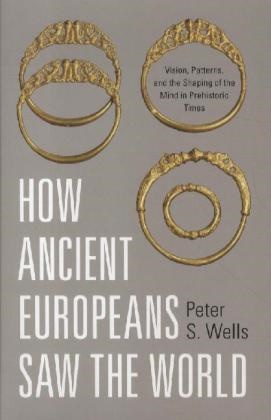Read more
Zusatztext "This book is thought-provoking; its broad geographical scope is particularly relevant in this post-credit-crunch world where European integration is once more on the agenda." ---Laura Slack, Time & Mind Informationen zum Autor Peter S. Wells is professor of anthropology at the University of Minnesota. His many books include Barbarians to Angels: The Dark Ages Reconsidered and The Barbarians Speak: How the Conquered Peoples Shaped Roman Europe (Princeton). Klappentext How Ancient Europeans Saw the World offers a completely new approach to the study of Bronze Age and Iron Age Europe! and represents a major challenge to existing views about prehistoric cultures. The book demonstrates why we cannot interpret the structures that Europe's pre-Roman inhabitants built in the landscape! the ways they arranged their settlements and burial sites! or the complex patterning of their art on the basis of what these things look like to us. Rather! we must view these objects and visual patterns as they were meant to be seen by the ancient peoples who fashioned them. Zusammenfassung The people who inhabited Europe during the two millennia before the Roman conquests had established urban centers, large-scale production of goods such as pottery and iron tools, a money economy, and more. This title argues the visual world of these late prehistoric communities was different from those of ancient Rome's literate civilization. Inhaltsverzeichnis List of Illustrations vii Preface xi Acknowledgments xvii Part I: Theory and Method Chapter 1: Of Monsters and Flowers 1 Chapter 2: Seeing and Shaping Objects 18 Chapter 3: The Visual Worlds of Early Europe 34 Chapter 4: Frame! Focus! Visualization 52 Part II: Material: Objects and Arrangements Chapter 5: Pottery: The Visual Ecology of the Everyday 72 Chapter 6: Attraction and Enchantment: Fibulae 99 Chapter 7: Status and Violence: Swords and Scabbards 112 Chapter 8: Arranging Spaces: Objects in Graves 131 Chapter 9: Performances: Objects and Bodies in Motion 155 Chapter 10: New Media in the Late Iron Age: Coins and Writing 176 Part III: Interpreting the Patterns Chapter 11: Changing Patterns in Objects and in Perception 188 Chapter 12: Contacts! Commerce! and the Dynamics of New Visual Patterns 200 Conclusion Chapter 13: The Visuality of Objects! Past and Present 222 Bibliographic Essay 231 References Cited 249 Index 281 ...

